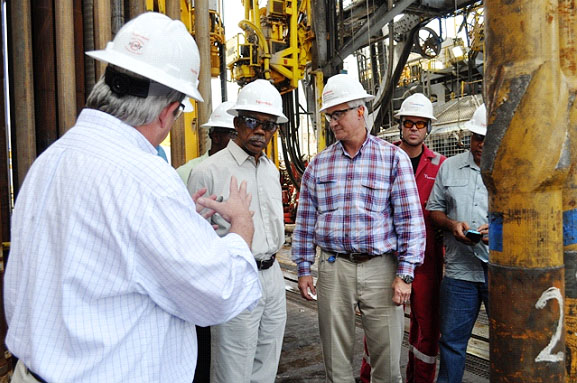By Karen Boman
|
ExxonMobil’s Liza discovery offshore Guyana could put the country on the map as a player in the global oil and gas industry, Wood Mackenzie reports.
Exxon Mobil Corp.’s significant oil discovery offshore Guyana is the most exciting thing happening in terms of Latin America exploration right now, analysts with Wood Mackenzie told Rigzone in an interview.
The discovery is the first oil discovery in Guyana, and indicates that ExxonMobil’s strategic focus on ultra-frontier acreage is starting to pay dividends after a period of exploration under-performance. However, it will take months to ascertain the size and commercial potential of this discovery, Wood Mackenzie said in a May 21 press statement.

“The fact that ExxonMobil is describing this as a significant find is certainly of interest,” said Matt Blomert, research manager for Wood Mackenzie, in an interview with Rigzone.
Two disappointing wells were drilled on the shelf in 2012: CGX Energy’s Eagle-1 and Repsol’s Jaguar-1 wells. The Liza discovery marks the first material discovery in Guyana since 2011, when Royal Dutch Shell plc encountered oil with its Zaedyus oil field in French Guiana. But subsequent appraisals of Shell’s discovery in 2012 and 2013 proved disappointing, Wood Mackenzie analysts told Rigzone.
“The Zaedyus appraisal demonstrates the risks around discovery volumes in the basin, specifically regarding seal integrity and hydrocarbon migration.”
Seal and migration are key petroleum system and reservoir parameters for any conventional explorer when looking at prospects and then how large the discovery might be, Julie Wilson, research director of Global Explo-ration at Wood Mackenzie, told Rigzone in a statement.
“In this basin, they are particularly relevant because of the stratigraphic complexity of the fan systems. It’s clear that there is a Cenomanian-Turonian source rock and petroleum system at play in the basin, and that there are potential reservoir rocks, but the key to making commercial discoveries is understanding where the oil migrated to and where it is trapped in sufficient quantities. Explor-ers here (as anywhere) will need to build good regional geological models, build a picture of what they think the prospects look like, and test that by choosing good drilling locations,” Wilson said.
Wood Mackenzie estimates a discovery of 350 million barrels exploited with a leased floating production, storage and offloading vessel could have an NPV10 of $1 billion and an IRR of 15 percent, assuming an oil price of $85/bbl.
“The fiscal regime is production-based PSC, allowing access to price upside but with little cushion against low prices,” said Wood Mackenzie, which estimates that a $70/bbl oil price would be needed to break even.
When ExxonMobil will bring Liza onto production remains to be seen. A long road to first production exists, Wilson said.
“Typically, deepwater projects take at least seven years, but in a country like this with no existing infrastructure, it could easily be 10 to 15 years, no matter what the price of oil is.”
Near-term oil prices should not have a significant impact on whether the discovery comes online. But the project will have to compete with ExxonMobil’s other global investment options, and that could be a reason for a long lead time.
The discovery could create tension between Guyana and Venezuela, Wood Mackenzie noted. Venezuela historically has laid claim to the western two-thirds of Guyana. The Liza-1 discovery is in uncontested waters, but part of the Stabroek block extends into territory claimed by Venezuela. Venezuela has argued that the gold-rich region west of the Essequibo River was stolen from it by an 1899 agreement with Britain and its then-colony. In March, Guyana’s foreign affairs ministry said it requested that Venezuela “desist from taking any actions that could only result in the stymieing of the development in Guyana.”
Stabroek bloc also contains the Ranger prospect, a potential Upper Jurassic/Lower Cretaceous carbonate build up with draped Lower Tertiary clastics.
“This is a different play concept from the Liza-1 find and a number of other prospects that will be drilled across the basin next year, all of which are turbidite sandstones in Cretaceous fans,” Wood Mackenzie analysts said.
ExxonMobil is assessing the Ranger prospect, and it could be drilled over the next 12 to 18 months, Wilson said.
“Although there are Lower Tertiary sequences, we believe the main target will be the carbonates below the Lower Tertiary. It is completely different from Liza in lithology – carbonate versus sandstone.”
Reprinted from Rigzone
Friday May 22, 2015
Rigzone is a leading online resource for news, jobs, data and events for the oil and gas industry
